The project includes two posters and a written companion that tell the story of cultivated coffee over hundreds of years, from the forests of Ethiopia to today. The project was led by Chris Kornman, the director of education for The Crown: Royal Coffee’s Lab & Tasting Room in Oakland. Kornman is also the author of Green Coffee: A Guide for Roasters and Buyers. The poster series ties together history, geography and genetic cultivation in a way that re-tells the complex story of arabica since the dawn of its commercialization to the present day. (Note: In most instances, the pieces use the term “cultivars” — a portmanteau of cultivated and variety — rather than the commonly misused (botanically speaking) but widely accepted term “variety.” With one poster built generally around mapping, and the other offering a timeline, the visualizations combined provide geographical and historical contexts for more than 60 of the most common arabica cultivars. Kornman said the guide project can be traced back at least eight years to his initial efforts to identify and debunk some historic myths regarding coffee cultivation, although more recent tastings and education work at The Crown precipitated the publishing project. Royal contracted the data visualization firm infonewt.com in April of this year. Transforming a wealth of data from written sources into an Excel spreadsheet and then into something far more engaging was no small task, according to Kornman. Greg put on his best half-zip for an interview with Eugene Magazine to discuss Equator Coffee Company’s three decades of true custom roasting in the Pacific Northwest. “Our oldest customer at Equator is named Roberto and he’s 92 years old,” Roberts says. “We don’t really need people to come out and get a pound of coffee because we’re not technically a store. But when customers like him come in, we talk about fishing, music, everything really. Roberto has been in the jewelry business for 70 years and he still comes to get his coffee here! That’s what’s fun about being here.” On a recent trip to Antigua, Greg learned how farmers protect the roots of Guatamala’s famous SHB-grade arabica. We’re not sure if Greg is more excited about talking coffee or getting to practice his Spanish but, either way, we’re lucky to have growers like Don Salvador keeping their eyes on our favorite Central-American beans. You should. You’ve got a great cup of coffee in front of you while you tap into all the information in the world on your phone. We at Equator feel lucky too. In spite of being astonishingly unaggressive in our sales efforts, we continue to receive more and more orders for coffee. After twenty five years of growing this business, it is nice to relax and enjoy life a little without having to scramble to pay for that curtain trailer full of coffee coming up from Frisco. Like all coffee roasters in the United States, we have seen very reasonable green coffee prices in recent years. This translates into good deals for the cafes and grocery stores we serve, who in turn can put that pound of fine coffee in your shopping cart at a price that doesn’t force you to put anything else back on the shelf. Good times for all. Other companies are far more imaginative than we are. They go for the grand gesture: sponsoring electronic music festivals and buying radio time on university stations—you know, just like the Italian artisans of yore—and their customers foot the bill, often at twice the price any reputable business should charge. As for us, we’ll keep serving the whole community: the starving student ; the millionaire software developer; the symphony cellist; the weird neighbor who people say “kinda keeps to himself.” And we thank all of you for supporting our enterprise for the past two-and-a-half decades—from the super-successful cafes who buy a hundred pounds a week, right down to the fishing pals and music cronies who stop in from time to time for a pound of joe and a chat. These easy times won’t last forever. Recently we have seen some startling changes in the coffee business. The price of coffee has risen more than 20 percent in recent weeks, and in the future coffee may cost a bit more for all of us. But there is another side to that prospect: a large chunk of that increase will go to the farmers who actually make this wonderful drink possible. As their customers from day one, we’ve always been willing to pay a little more for top quality, and you’ve proven us right by coming back year after year. In short, we’ll maintain that difficult balancing act which allows everyone—farmers, brokers, roasters and baristas—to make a buck, and still deliver a great cup to you without sending you to the ATM every time you get a craving. We even entertain the crazy idea that we can keep doing this another twenty five years. We’re feelin’ lucky. Thanks to all. Greg. By Corey Roberts A bulletproof coffee is a cup of black coffee blended with MCT oil and a pat of butter. Some people swear by it as a replacement for breakfast. Some believe it promotes mental acuity. I’m not a dietician or a scientist, so whatever you think it does for you is your business. But as someone who’s been roasting coffee longer than he’s been shaving, I cannot recommend this drink. As much as I enjoy a splash of cream in my second cup of the day and even the occasional big-chain, coffee-flavored milkshake, adding butter to coffee is a bridge too far for me. When you’re as serious about good coffee as we at Equator are, you don’t use it as a mere substrate (I wouldn’t drink a hundred year-old cognac with a bunch of Flintstone Vitamins thrown into it either). However, if you INSIST upon making this monstrosity, maybe you can minimize the damage by using a softer coffee that already has slight notes of butter, like Organic Mexico, rather than a bright coffee (Ethiopia, Tanzania). To me, the better solution seems to be to throw all those non-java ingredients into a blender with a half-cup of warm water and a few spinach leaves and then shoot it back in one gulp. You enjoy the supposed health benefits of the trend without compromising your delicious cup of coffee which, at only five calories per cup, already seems like a pretty healthy morning option on its own. There is no reason to buy a Keurig machine. I’m starting at the end so if you’re reading this in your car you can put the phone down and not run over any schoolchildren. For the rest of you, allow me to explain: When people buy Keurig single-use pod machines, they usually have the best of intentions: They’re not big coffee drinkers (let alone experts) and they’d like a no-hassle way to make the occasional cup of coffee without having to commit to an elaborate machine or make a full pot, some of which might go to waste. Here are the problems: KEURIG COFFEE IS BAD. KEURIG COFFEE IS EXPENSIVE. Never mind the cost of the machine, Keurig is charging over twenty-five-dollars-a-pound for the coffee in its pods. Most roasters wouldn’t charge that even if we had a line of tattooed, bearded suckers lining the block to pay it. If you only use the machine sporadically you might not feel squeezed, but you’ll still be paying Kobe beef prices for gas-station coffee. Again, good coffee will make me forgive almost anything, but over-charging for bad coffee is unconscionable, especially when… KEURIG IS NO MORE CONVENIENT THAN REGULAR COFFEEMAKERS. A coffee maker and a Keurig take the same amount of time to heat water, so there is no speed gained using a Keurig. In the event that you want multiple cups, a KEURIG IS SLOWER than a conventional coffee pot because it is designed to handle one cup at a time and often needs to recover between servings. Discarding a used filter takes no more effort than discarding a used K-cup and, on those days when you’re serving multiple cups, discarding a single used filter is far less wasteful than discarding a K-cup for each serving. EQUATOR RECOMMENDATIONS FOR OCCASIONAL COFFEE DRINKERS: If you already have a Keurig machine, you can still get the most out of it by buying refillable k-cups and filling them with your favorite coffee. For the Keurig process we recommend Organic Italiano. This approach tastes better, costs less and is better for the planet. If you haven’t bought yet, consider a small coffee maker, a box of size #2 filters and a pound of something decent (or even freaking amazing) and stash it in the freezer until you feel like a cup. A full pot from a small coffeemaker still costs less than a single cup of Keurig, and the taste is vastly superior. The only danger is that your coffee-drinker status may go from “occasional” to “all day every day,” which isn’t a bad club to be in. JOIN US!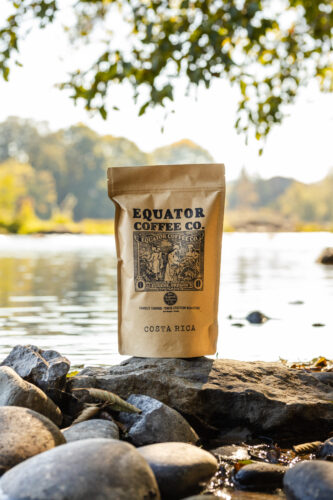 Bay Area-based coffee trading company Royal Coffee has released an engrossing historical interpretation of the coffee family tree, called the World History and Geography of Arabica Cultivars.
Bay Area-based coffee trading company Royal Coffee has released an engrossing historical interpretation of the coffee family tree, called the World History and Geography of Arabica Cultivars.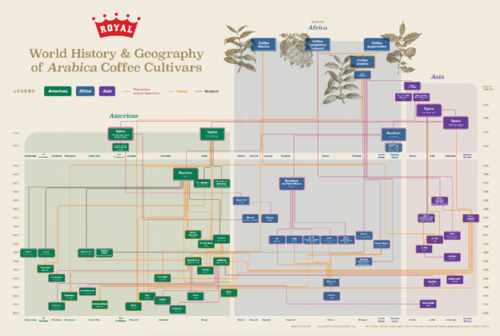
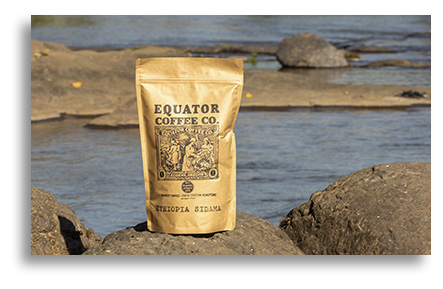
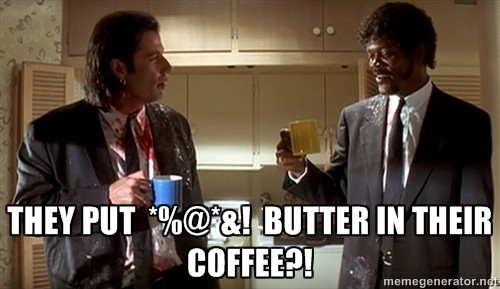
We’re interested to hear what you think about this trend. Are we missing something? Is there a more palatable way to make it? Is it even healthy to begin with, or just another excuse for people to shove butter into their faces? Let us know in the comments section. Thanks!
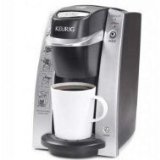 Good coffee will make me forgive almost anything (high-prices, angry-for-no-reason baristas etc) and if Keurig pods represented a way to deliver improved quality to the casual coffee drinker, I’d view them as a net-positive, whatever other drawbacks there may be. But Keurig is not good. At under half an ounce per pod, Keurig coffee is weak, even at the machine’s strongest setting. It is also stale. It was stale before it was shipped; it was stale when you picked it off the shelf; it’s been stale the whole time it’s been sitting in its precious pod-tree on the countertop. ANY coffee that is ground, warehoused and then stocked at room temperature for weeks, possibly months, on end will be suboptimal.
Good coffee will make me forgive almost anything (high-prices, angry-for-no-reason baristas etc) and if Keurig pods represented a way to deliver improved quality to the casual coffee drinker, I’d view them as a net-positive, whatever other drawbacks there may be. But Keurig is not good. At under half an ounce per pod, Keurig coffee is weak, even at the machine’s strongest setting. It is also stale. It was stale before it was shipped; it was stale when you picked it off the shelf; it’s been stale the whole time it’s been sitting in its precious pod-tree on the countertop. ANY coffee that is ground, warehoused and then stocked at room temperature for weeks, possibly months, on end will be suboptimal.
